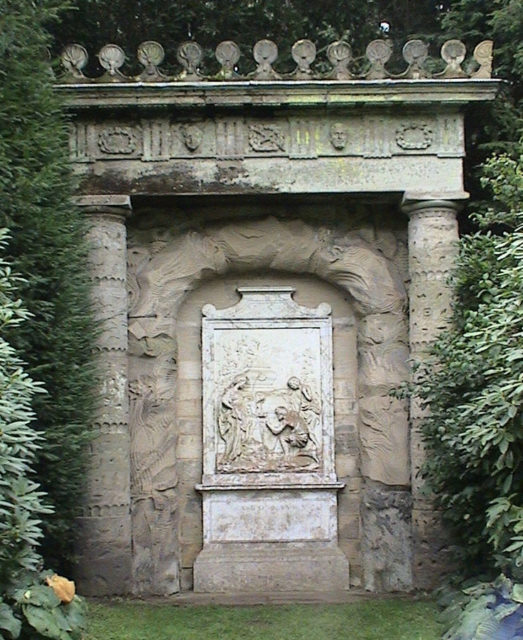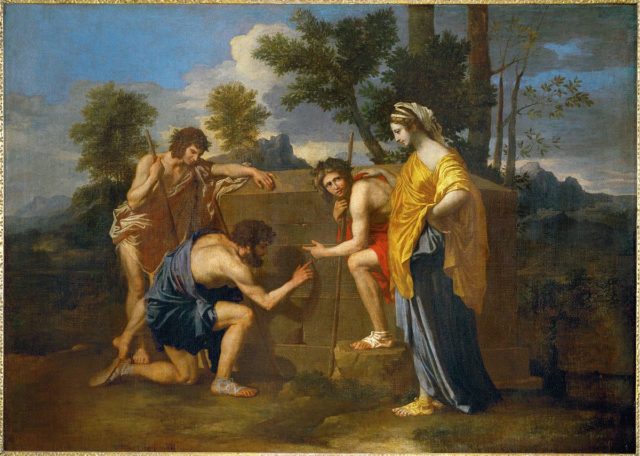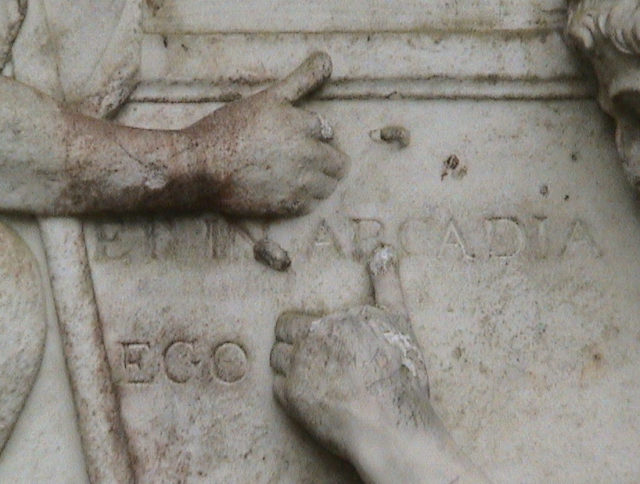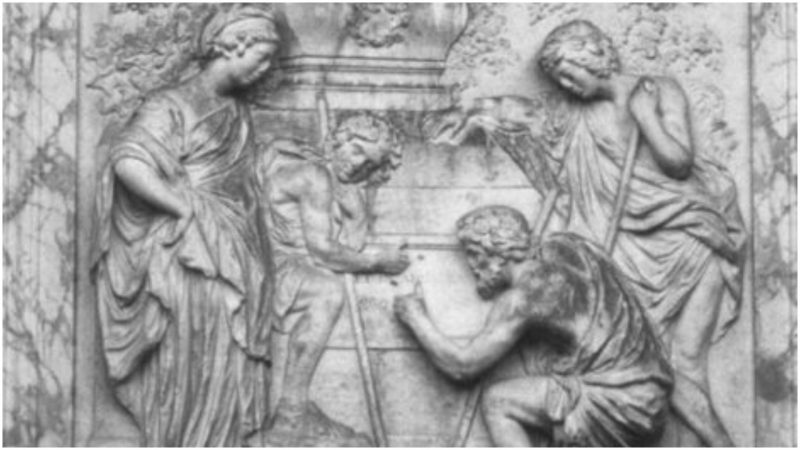The Shugborough inscription, which can be found on the 18th-century “Shepherd’s Monument,” has baffled scientists and linguists for many years.
The monument is located on the grounds of Shugborough Hall in Staffordshire, England.
Just below an engraving of Nicolas Poussin’s “Arcadian Shepherds” painting lies a seemingly random sequence of letters, “O-U-O-S-V-A-V-V,” etched on the monument between the letters “D” and “M.” Without an explanation for its meaning, the inscription is considered one of the world’s most perplexing ciphers and remains uncracked to this day.
The code’s uncrackable status may be in danger, though, thanks to Keith Massey, a linguistics expert, and Latin and Arabic teacher. He believes he found a convincing answer to the riddle which has stumped many geniuses throughout the ages, including Charles Dickens and Charles Darwin. The greatest minds of the 19th century tried to determine the meaning of the elusive enigma but gave up halfway through.
Massey, who was recruited by America’s National Security Agency after 9/11, used his vast knowledge of Latin to fill in the blanks. Massey theorizes that the seemingly ambiguous letters “O-U-O-S-V-A-V-V” may stand for “Oro Ut Omnes Sequantur Viam Ad Veram Vitam,” which translates to “I pray that all may follow the Way to True Life.”

“I believe I’ve solved the mystery. I believe my proposal provides a sensible and credible interpretation to this long-standing mystery,” states Massey, with high hopes that the code can now be stripped of its enigmatic shroud.
“My solution provides a straightforward and grammatical sentence, all parts of which are attested in tomb inscriptions and texts predating or contemporary with the creation of the Shugborough inscription.” He emphasizes the straight-to-the-point approach as an accurate method and advises not to look for any deeper meaning.
Massey strongly believes that the letters D and M, which are just below the inscription, are leading clues. That certainly made the job easier; he thinks that the abbreviated letters stand for “Dis Manibus” which means “for the Manes” (mythical spirits of the underworld), which is found inscribed on various ancient Christian tombs.
Massey elaborates on the connection between the Manes and Christian tombs: “this is a clue to the correct interpretation of the longer series of letters. The inscription was intended to be understood as a tomb memorial composed in Latin.”
Additionally, he explains that the three Vs may also be useful in deciphering the code. “As someone trained in cryptography,” he says, “I assume anytime you have a letter that occurs more often than other letters, you are looking at an important clue.” Comparing it to a passage in the Bible (John 14:6, “Ego sum Via et Veritas et Vita“), the pieces of the puzzle fit together perfectly.

One of the more imaginative theories about the Shugborough inscription suggests that the sequence of letters hints at the legendary whereabouts of the Holy Grail itself. Amusingly enough, another legend claims that it was made by the Knights Templar, which would imply that they created a deliberate diversion to protect the Holy Grail from the grubby hands of curious adventurers.
The mysterious letters have divided many researchers, scientists, and historians, each with their own unique theories and answers which contradict one another. One such expert is AJ Morton, whose expertise is monuments, tombstones, and the Knights Templar, apparently.

He bravely dismissed the enigma as just a bunch of mindless scribbles. He suggested that they were made by the house’s residents themselves, George Adams and Mary Vernon-Venables, which begs the simple question: why?
There is no reason for the residents of Shugborough to misguide anyone with the inscriptions. Morton also considers Thomas Anson, a British Member of Parliament who originally commissioned the monument around the 1700s, to be of dubious nature. The monument was erected between 1748 and 1763 by Peter Schee, a Flemish sculptor, under Anson’s brother George’s payroll, but no one is sure if Schee or Anson may have inscribed the letters.

To sum up, there are numerous hypotheses that have been carefully constructed to explain the Shugborough inscriptions. Three theories, both acrostic (matching the first letters to a word) and non-acrostic, are perhaps most popular:
- The inscriptions are an ancient love letter which glorifies the Holy Grail.
- They are George Anson’s declaration of mourning for his deceased wife.
- The monument is a huge prank, acting as a red herring to tantalize whoever tries to find meaning in the inscriptions.
“We get five or six people a week who believe they have solved the code so we are a bit wary of them now,” says Shugborough’s spokesman. Whoever inscribed the letters surely intended them to remain a mystery for many years.
Nobody knows if the inscription will ever be unequivocally solved. The National Trust-owned property’s staff strongly believe that the mysterious riddle is far from decoded and will continue to baffle whoever tries to solve it.
